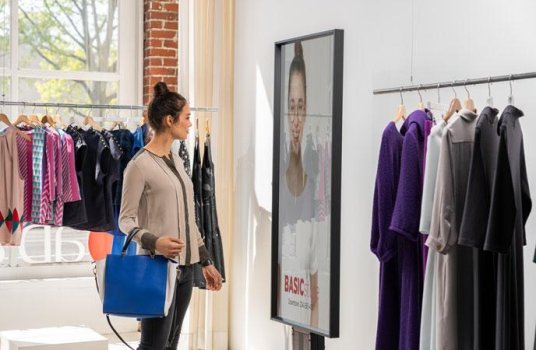K
Kathleen Martin
Guest
The National Retail Federation held its annual NRF 2022 conference this week, and the tech industry was there in force. Qualcomm, for example, held a briefing ahead of the event to celebrate its third year of attendance where it outlined how it plans to build its IoT business with a large focus on retail customers. And at the conference itself, Twilio, Intel, Nvidia, PTC, Comcast, and scores of data analytics companies demonstrated how they’re using technology to make the physical retail experience as responsive and trackable as digital shopping.
Edge computing, targeted advertising, and computer vision solutions were made available, with various big tech companies showcasing partnerships that help retailers track shopping carts while also using them to deliver targeted ads, partnerships that leverage computer vision for loss prevention — even partnerships dedicated to dynamic pricing and truly accurate inventory management.
The tech industry has been wooing the retail industry for a decade, but the shift from e-commerce and providing cloud services to more IoT-enabled products has been happening for the last five years. And with the pandemic, the retail industry is wrestling with conflicting trends, such as more online shopping leading to the need to converge e-commerce and physical inventory, and in-person shoppers wanting to spend less time in physical places touching things. A rise in the number of thefts and continued pressure on margins are also leading some groceries, drugstores, and other shops to look at new loss prevention techniques and ways to make money on advertising or consumer data, respectively.
Continue reading: https://staceyoniot.com/the-future-of-retail-brings-digital-surveillance-to-the-real-world/
Edge computing, targeted advertising, and computer vision solutions were made available, with various big tech companies showcasing partnerships that help retailers track shopping carts while also using them to deliver targeted ads, partnerships that leverage computer vision for loss prevention — even partnerships dedicated to dynamic pricing and truly accurate inventory management.
The tech industry has been wooing the retail industry for a decade, but the shift from e-commerce and providing cloud services to more IoT-enabled products has been happening for the last five years. And with the pandemic, the retail industry is wrestling with conflicting trends, such as more online shopping leading to the need to converge e-commerce and physical inventory, and in-person shoppers wanting to spend less time in physical places touching things. A rise in the number of thefts and continued pressure on margins are also leading some groceries, drugstores, and other shops to look at new loss prevention techniques and ways to make money on advertising or consumer data, respectively.
Continue reading: https://staceyoniot.com/the-future-of-retail-brings-digital-surveillance-to-the-real-world/

